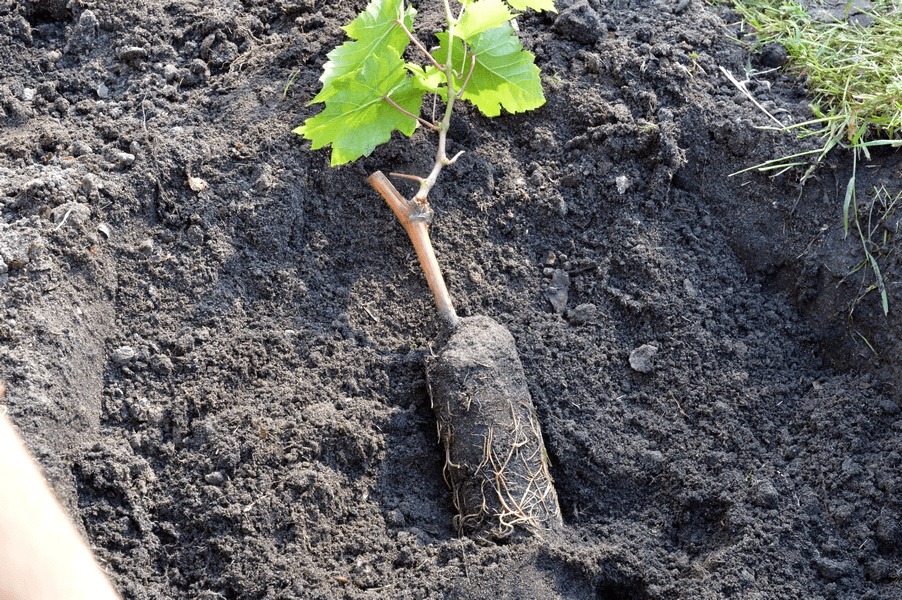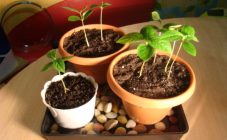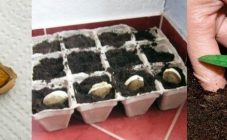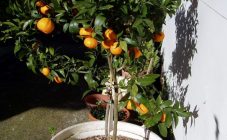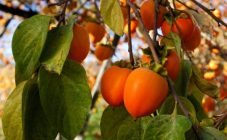Content:
Growing perennial fruit-bearing plants from seeds is difficult and does not always justify the investment of time and effort. How to grow grapes from seed is interesting not only for summer residents, but also for those who want to decorate their balcony or loggia with a grapevine. Liana is not only decorative in itself, but with proper care it gives a crop that justly rewards the efforts of the owner.
Why you need to grow grapes from seed
Traditional viticulture involves the use of ready-made seedlings or cuttings on sites. The technique is simple, on the shoulder of novice winegrowers. The choice of seedlings or cuttings is great, but experienced, and often novice gardeners consciously go to difficulties. The main incentives are:
- Growing your own stock. The vine grows quickly, so you can significantly save on seedlings.
- A polygon for experiments. Often on such vines, they try new feeding methods, means of protection against diseases and pests.
- Getting a new own variety by re-pollination with existing plants.
- Sometimes it is easier to purchase seeds of interest than to find a ready-made seedling.
- For decorative purposes. This is especially true for indoor plants. Carved leaves and intricately curved shoots adorn any interior.
- Curiosity multiplied by excitement. Own harvest is a matter of special pride for the summer resident.
Grape seeds for self-cultivation are selected according to the rules:
- Hybrid varieties are selected from the ready-made seeds purchased in garden centers. They are more resistant to adversity, they have better characteristics.
- For self-selection of planting material, only fully ripe berries are taken. Signs of a mature seed: large size; the shell is dense, its color is brown; bone solid body; the content is white or light gray.
- After visual inspection, the bones are lowered into a glass of water: full-fledged ones sink, non-viable ones float.
Suitable for experiments are the varieties Russian Concord, Voskovoy, Vostorg, Victoria, Laura, Talisman, Isabella and others, preferably early. Their seeds germinate easily at home and in garden beds.
Cultivation of Prirechny (aka Zelenaya Gora) from grape seeds is also possible, but this kind of fruit gives little use for any application, since their taste is not pronounced, but the vine itself looks luxurious. They are usually grown for rootstocks.
Experienced winegrowers grow various varieties of seeds for various purposes - for juice, wine, jam, a seasonal delicacy, focusing on the climatic conditions of the area where the vineyard is located. Particularly stubborn people manage to get a decent harvest of such a whimsical variety as Saperavi.
Where and how to grow grapes at home
Before planting grape seeds, they are prepared:
- washed under running water until the pulp residues are completely removed;
- dry;
- wrapped in a soft damp cloth or sprinkled with vermiculite, sand, shifted with wet moss, packed in a plastic bag or box;
- stand for 60-90 days in a cool place at temperatures below 15 ° C (you can in the refrigerator).
The stratified seeds are periodically, every 7-10 days, examined, washed. By the end of a month and a half, the shell begins to crack, the rudiments of the roots appear - a sign of the transition to the next stage of preparation.
At the second stage, the seeds are wrapped in a damp cloth and placed in a warm place to finally germinate them. Usually, after 2 days, the first thin white roots are formed. The seeds are ready to plant.
Since the optimal timing for sowing seeds is considered the second half of February - early March, the timing of laying them for stratification is the second decade of December.
Pot and soil for germination
For germination, ordinary plastic cups or pots with a volume of 150-200 ml with drainage holes will fit. A large number of seeds are planted in seed boxes or containers.
Step-by-step instructions for planting hatched seeds:
- A 2-3 cm drainage layer is laid on the bottom of the seedling container.
- Pour a fertile substrate, consisting of 1 hour of coarse sand and 2 hours of humus, previously disinfected, slightly moisten it.
- Grape seeds are placed in holes or grooves 1-1.5 cm deep, covered with earth. The distance between them is maintained at least 4 cm.
- The pots are placed on a warm, well-lit south-facing windowsill.
- The soil is regularly moistened with a spray gun, preventing it from drying out or waterlogging.
- To prevent the appearance of a black leg, the surface of the substrate is mulched with perlite.
- The optimum temperature for germination is from 15 ° С at night to 20 ° С during the day.
You can sow grape seeds directly in open ground. The preparation is carried out according to the above described method. The sowing period is the end of May-June, when warm weather finally settles. The beds for sowing are prepared as for planting seedlings or cuttings.
Sprout care
The first sprouts of grapes appear 2-3 weeks after planting, depending on the variety, the terms stretch to 1.5-2 months. The shoots look somewhat unexpected - they look like pepper shoots.
At first, caring for seedlings is simple, but it should be regular:
- The duration of daylight hours is maintained at a level of at least 8 hours.
- Watering is regulated so that the soil is constantly slightly damp. At first, they use a finely dispersed spray gun. Water is used at room temperature.
- The upper layer of the substrate is loosened with extreme caution so as not to damage the young roots.
- The seedlings are fed with nitrogen and phosphorus fertilizers of low concentration. The first time the nutrient mixture is watered at the stage of 2-3 true leaves, nitrogen-containing substances are used - urea or ammonium nitrate. Further, fertilizers are applied every 2 weeks. Recommended complexes - agronova, clean slate, master.
The main pest of young plants growing in a limited amount of land is the spider mite. To prevent his attacks, the leaves are regularly sprayed with water, to which a small amount of laundry soap is added. If trouble happens, actarine is used - a biological preparation against insects and ticks.
The first transplant of a growing vine is carried out when its height approaches 10-12 cm. The containers are taken for 2-4 liters.Usually, the transplant takes place in late spring, when the daytime outside temperature rises so much that the pots of seedlings can be taken out to the open balcony.
In the open ground, teenage grapes are planted in the fall, having prepared a place for it where it will grow constantly, and the ground. If circumstances require an earlier planting, they are guided by the condition of the seedling: it should form 5-7 leaves. Before early transplanting, the hardening of the vines is carried out more intensively.
Care for a seedling in the open field is carried out according to the method adopted for cuttings and seedlings.
Citizens who do not have summer cottages are often interested in whether it is possible to grow grapes from seeds and how to do it at home. The technology completely coincides with the one described above. The following rules are taken into account:
- If the vine is intended for home cultivation, a place for it is chosen with good lighting.
- In autumn, when the foliage falls, it is transferred to a cool room, where in winter the temperature will be kept at 3-5 ° C.
- It is quite difficult to maintain the healthy state of the grapes at home, therefore, when the liana grows to a height of 2 meters, they look for a place for it on the street.
Fruiting of grapes grown from seeds
Typically, a vine that has grown from a seed begins to bear fruit at 4 or 5 years. So that the first harvest does not linger, simple rules are observed:
- careful care of a young plant;
- the first pruning of the vine is carried out only after the first harvest.
Earlier fruiting is possible in the southern regions, but this is rather an exception to the rule than the norm due to a warm climate.
When growing grapes from seeds, it is important to know the following features:
- Almost the full genetic set of characteristics of the variety is carried by the vine - 99.99%. Berries ripening from seeds on a vine rarely fully inherit the taste and physical qualities of the mother plant.
- The first few years, the harvest of new grapes leaves much to be desired, the berries are small, and there is critically little sugar in them. As the vines mature, their quality improves, but the complete resemblance to the fruits of the parent vine is practically unattainable, unless by pure chance.
- But there is also an advantage of such a vine - it grows as adapted to the climatic characteristics of the site as possible, is less susceptible to frost, and has a stronger immunity.
Although growing grapes from seeds is a laborious and troublesome business, a beginner can cope with it, especially by choosing the simplest types for practice. Even if ripe berries turn out to be unsuitable for food in terms of taste, a developed vine can be used as a high-quality, frost-resistant stock for more delicate varieties. If the experiment is successful, the berries are beautiful and tasty, the vineyard on the site will be replenished with a new specimen, about which one can proudly say that this is an author's variety.

